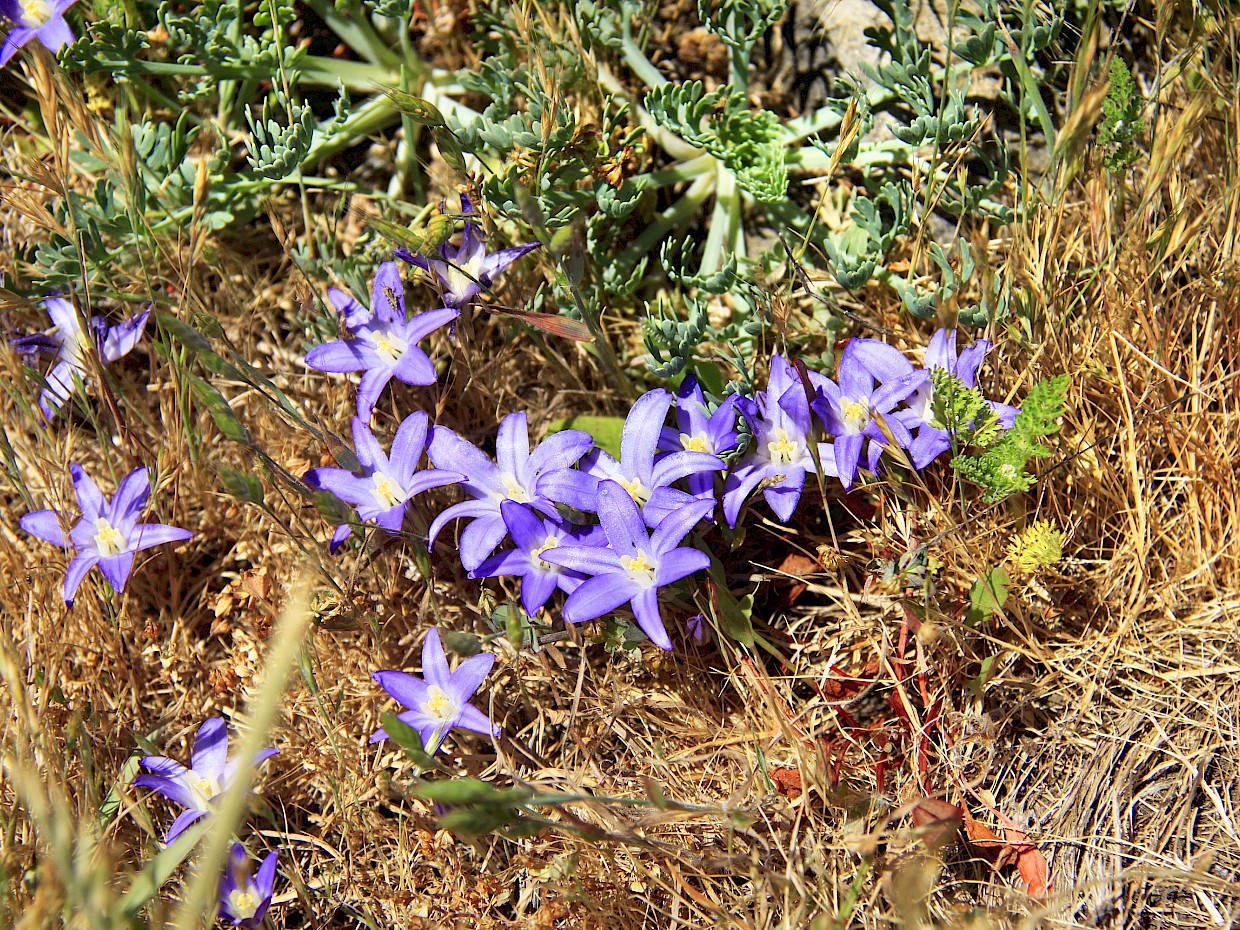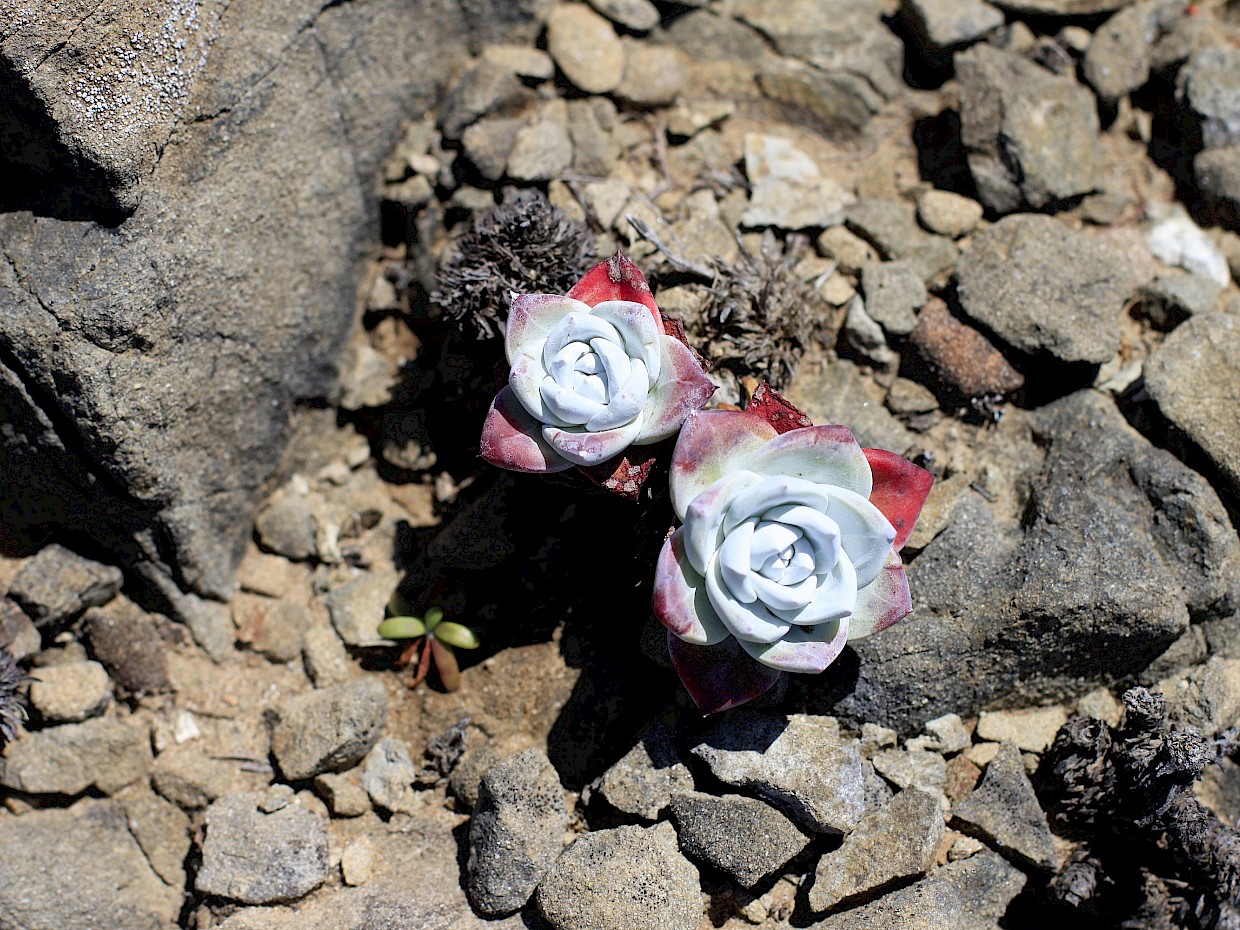Native Plants
Mendocino Coast Botanical Gardens places a high value on native plants. On our 47-acre property approximately 32 acres are dedicated to ecological restoration. We also feature California natives in our landscape where they are appropriate and some of our most valuable collections (such as, rhododendrons) have local native species.
A botanical garden is the perfect place to educate the public about all plants, including native plants, and introduced plants — which leads to important discussions about local ecology and land stewardship. Native plants add to the beauty of our plant palette and add to the relevance of our mission to engage and enrich lives by displaying and conserving plants in harmony with our Northern California coastal ecosystems and to preserve public access to the coast.
Native Plant Garden
Our Native Plant Garden, initially installed in 2010 by MCBG Naturalist, Mario Abreu, was put together by a team of local native plant experts to display and label a collection of Mendocino County plant species of interest to local gardeners.
The Garden site is located on the North Trail before it drops down into the riparian zone of Fern Creek. The habitat in that region of the garden is our native and rare Closed Cone Bishop Pine Forest. Many fully established and beautiful native specimens already create a backdrop of serene natural beauty along the North Trail and around the Native Plant Garden. In 2022 we made changes to display and label native plants more effectively.
The revitalization project features natural garden beds with labeled forest-dwelling native plants that enhance the beauty of the forest that is already present. A seating area offers a quiet gathering place for classes or small groups. Many of the plants on display are the same as the plants that are already established in the area, many of them were brought in or propagated from our property for the original inception of the Native Plant Garden. The revitalized area has become a place for naturalists and gardeners to stop along the way for information and inspiration.
Bluff Wildflowers
Typical bloom time: March through June
Spring visitors may see California poppy (Eschscholzia californica), angelica (Angelica hendersonii), live-forever (Dudleya farinosa), seaside wooly sunflower (Eriophyllum staechadifolium), seaside daisy (Erigeron glaucus), sea thritft (armeria maritima), and goldfields (lasthenia californica). The coastal grasslands or prairies were once the most species-rich grassland types in North America. Most have been lost to urbanization and agriculture. The Gardens’ coastal grasslands were once used to grow potatoes and other crops. Restoration of the grasslands is under way, we are managing the exotic and invasive grasses to protect the local, coastal grassland species such as tufted hairgrass (Deschampsia caespitosa), Douglas iris (Iris douglasiana), California blue-eyed grass (Sisyrinchium bellum), lupine (Lupinus variicolor), and footsteps-of-spring (Sanicula arctopoides). Please stay on designated trails in this delicate area, we appreciate your mindful enjoyment of our native coastal grasslands.
Non-native plants as villans?
In our mind, no plants are villains. There are many, many plants that have been introduced that are beautiful and well-behaved. Other introduced plants are intrusive and hard to handle. Likewise, there are plenty of natives that can take their rightful place in the ornamental garden or wild areas, and some natives that behave as weeds (intruders). It is the responsibility of every gardener to be mindful of local ecology and natural spaces. It is the role of botanical gardens to set the tone for how humans relate to all plants in our back yards and around the world.
HOLIDAY FUN WITH NATIVE PLANTS
In 2020, the Gardens join botanic gardens, nurseries, and the California Native Plant Society (CNPS) for a little holiday fun! Check out a quick video about the Gardens' experience with the inaugural Wreath Masters competition – watch it on the MCBG YouTube Channel.
Next: Begonias »
« Previous: Wild Mushrooms








